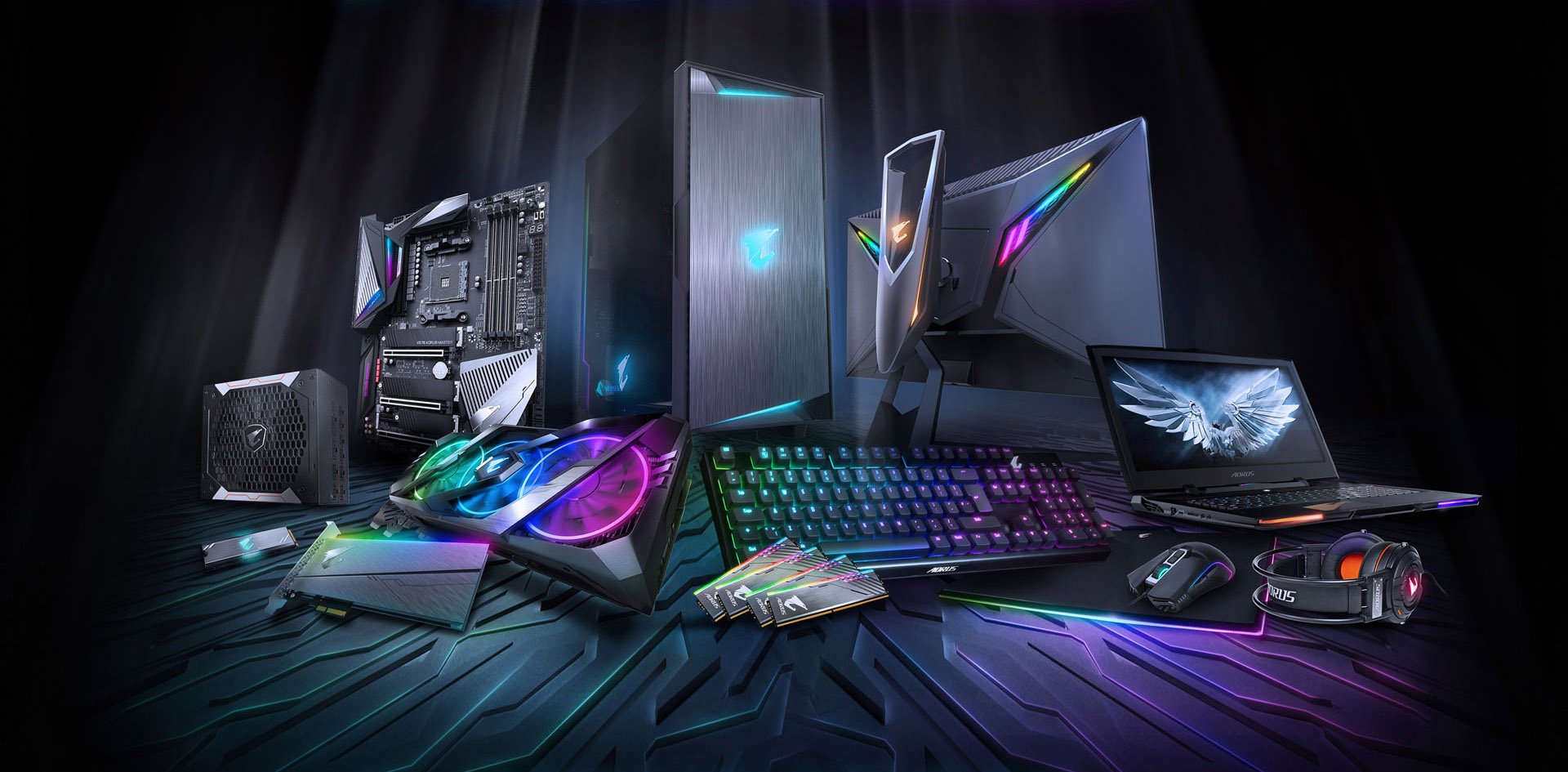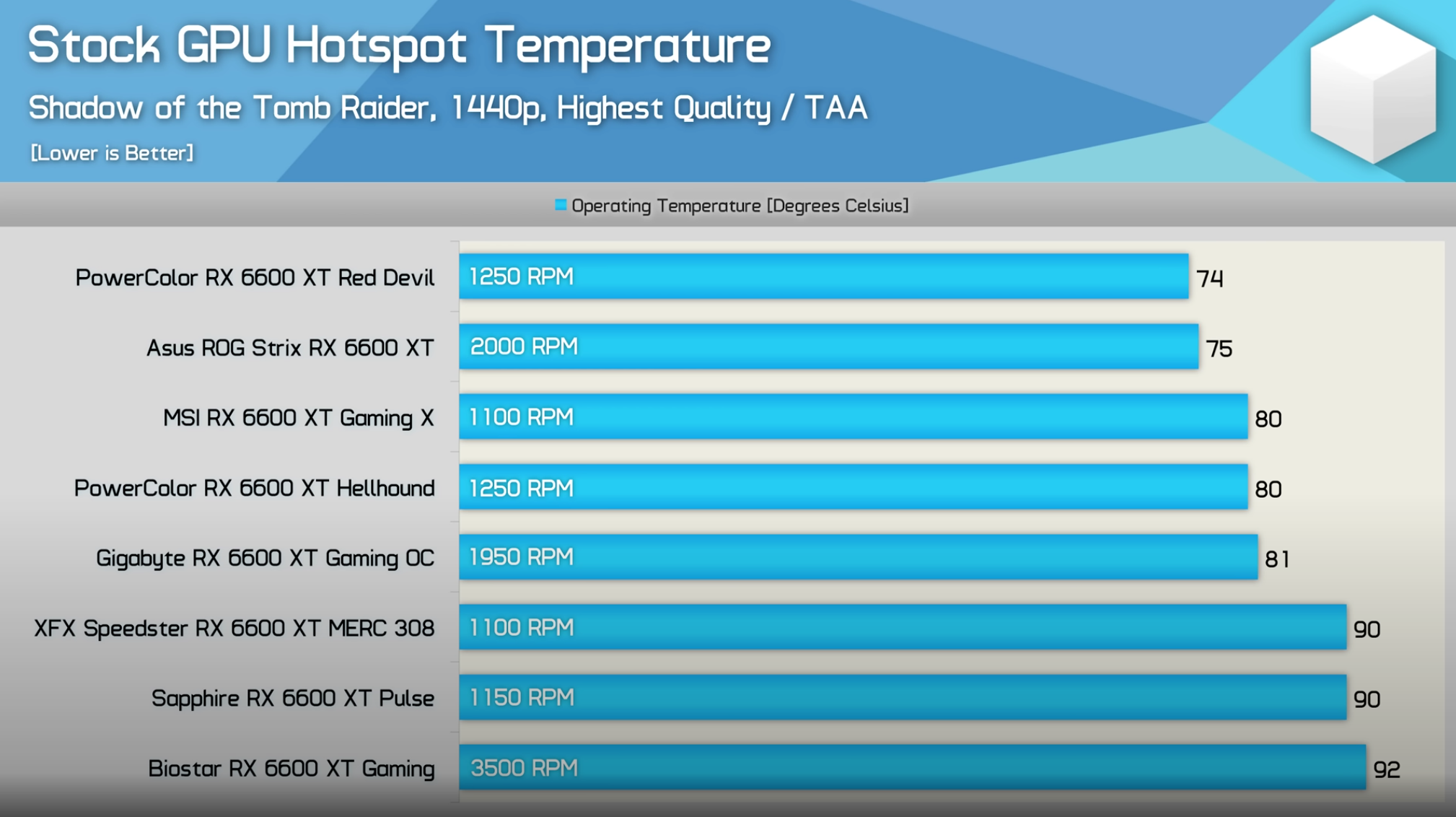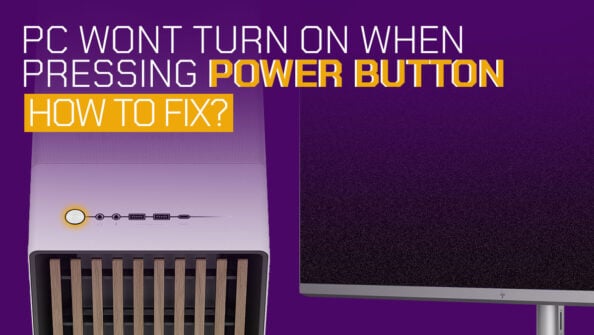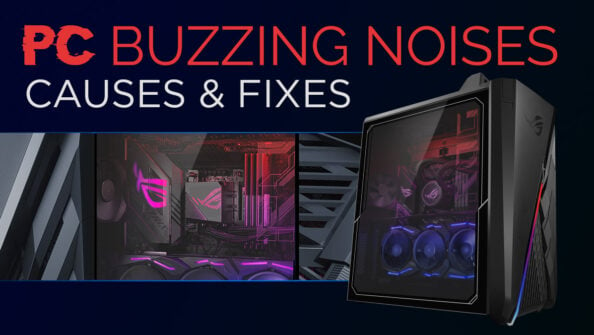TABLE OF CONTENTS
Buying anything in today’s world feels more like a chore than a journey worth remembering.
There are so many options, so many different models and SKUs, and so many companies vying for one’s hard-earned money with a series of products on offer both large and small, cheap and premium. And, frankly, this holds true regardless of the product you’re after.
Phones, laptops, tablets, computers, motherboards, graphics cards, monitors, controllers, and so on and so forth — it’s all a blurry, overwhelming mess even for the most experienced among us.
And that, in short, is the whole point of this “series;” you can think of it as a primer on all the biggest and most prominent “players” on the market — a list which would obviously be incomplete without GIGABYTE.

Image Credit: GIGABYTE
Are its products any good? Are they worth the asking price? What about GIGABYTE’s warranties and RMA procedures? Customer support and everything in between? How do its products — be they motherboards, monitors, graphics cards, or something else entirely — stack up against the competition?
Those are some pretty hard questions to answer as GIGABYTE, much like a few other OEMs, inhabits this weird, hard-to-define realm.
Some of its products are absolutely stellar. Well-built, feature-rich, and stunning to look at. Others are about as mediocre and uninspiring as it gets. Others still have horrendous QC issues — an understatement if ever there was one.
For more information on one especially egregious debacle, make sure to watch the following video:
And that, in no small part, is why it’s so hard to fully gauge GIGABYTE and its varied offerings: the quality of its products varies wildly from one generation to the next.
We also opted to start things off with the aforementioned video as it essentially shows what GIGABYTE did and said during a “moment of crisis;“ this company has released some truly stellar products over the years, but it’s also had some mighty alarming mistakes, so it’s a bit of a mixed bag.
History of GIGABYTE
GIGABYTE (or, as it is officially called: Gigabyte Technology), is a computer hardware manufacturer from Taiwan.
It was founded in 1986 by Pei-Chen Yeh and has over the years grown into a globally recognizable brand.
It is, primarily, known for its motherboards and graphics cards, but it also manufactures a wide range of consumer electronics, including gaming laptops, mini PCs, mice, keyboards, headsets, power supplies, SSDs, and so on and so forth.
With that being said, the product categories in which GIGABYTE really stands out — for a wide range of reasons — are motherboards, dedicated graphics cards, gaming monitors, and, to a much lesser degree, gaming and creator-focused laptops.
Are GIGABYTE Products Worth It?
They are. In fact, GIGABYTE’s products are often priced just right — depending on the SKU and well, a myriad of other factors.
They’re well-built, aesthetically pleasing (at least more often than not), and work as advertised.
These things do vary from one generation to the next, especially when it comes to GIGABYTE’s motherboards and graphics cards — and the same holds true for all other OEMs as well.
GIGABYTE’s GPUs are, for the most part, quite good — if unimpressive. They’re not “value champions” nor do they offer the best thermals when compared to the competition. A middle-of-the-pack contender, if you will.
This, of course, might be a bit better (or worse) depending on the generation, so definitely make sure to read and watch as many reviews as possible before making any kind of purchasing decision.
The following image from Hardware Unboxed sums it up nicely:

Source: Hardware Unboxed, YouTube
Good, acceptable, reasonable — all appropriate adjectives used to describe GIGABYTE’s RX 6600 XT. It doesn’t excel in any particular way, nor does it provide a mind-blowing amount of value.
The situation is a fair bit better when it comes to two of GIGABYTE’s NVIDIA RTX 4070 models, but they’re still not exactly topping the charts in any particular way.
The general consensus is that their GPUs run a bit hotter than their competition (depending on the model) and aren’t nearly as silent which is also in line with Hardware Unboxed’s findings.
Their motherboards are a lot more alluring, though, and have been enjoying stellar sales with each succeeding generation.
Then again, it’s hard to really give this OEM a pass with the way it handled its exploding power supplies and, perhaps equally as worse, the most recent “backdoor” debacle.
If we ignore this, admittedly quite glaring violation, we’d say that GIGABYTE’s motherboards are still quite reliable and, for the most part, well-made and competitively priced (depending on the model)
GIGABYTE’s Warranty Policy
GIGABYTE motherboards come with three-year warranties, regardless of the form factor and product line (Ultra Durable, Gaming, AERO, AORUS). The same holds true for their graphics cards as well.

Image Credit: AORUS
The warranty period might differ slightly depending on your region so, as always, make sure to read the fine print.
For peripherals, it’s mostly two years, three to ten for power supplies, three to five for CPU coolers, three years for system fans, and either three or five for SSDs.
GIGABYTE gaming monitors (LCD) that are under 40″ are covered with three-year warranties, whereas large ones — and OLEDs — are covered for just a single year.

Image Credit: AORUS
All in all, standard stuff.
If you buy one of GIGABYTE’s graphics cards you’re also eligible for an extended four-year warranty — assuming you register your GPU within thirty days or purchase.
For the full list of applicable models, make sure to click on the following link.
As far as RMA procedures are concerned, we’ve heard nothing but horror stories.
Whether those stories are blown out of proportion is up for debate, but a lot more people seem to have had horrendous experiences with GIGABYTE — even more so than with other AIB partners and OEMs.
This, as already mentioned, varies from one region to another, but the point stands nonetheless.
Conclusion
No company or OEM is perfect. That much is a fact. And, unfortunately, issues arise. That, too, is inevitable.
How these manufacturers react in those “moments of crisis” is what’s most important.
Do they ignore the problem and turn a blind eye or do they, conversely, own up to the issue and deal with the matters at hand in an appropriate, consumer-friendly way?
GIGABYTE doesn’t have the best track record when it comes to these things and, frankly, that’s an understatement. The general consensus is that its products are, for the most part, quite good.
They’re not offensively priced and they don’t malfunction all that often (your mileage will vary, as always), but — should an issue arise — you’re probably not going to have that good of an RMA experience.
Customer service and overall support are just not something GIGABYTE excels at — although that, too, varies from one region to another.
The company itself has also had many rather outrageous blunders, with some of its PSUs exploding, its servers getting breached (which led to the loss of an immense amount of warranty and RMA data), and so on and so forth.
The quote “there aren’t any good brands, just good products” applies here as much as it does with any other company.
The sheer potential of having a bad RMA experience is enough for us to go with GIGABYTE’s competitors, but they, too, have their own laundry list of issues and shortcomings, so it’s pretty much a “pick your poison” kind of situation.
Still, the way in which these companies handle their customers’ woes varies and, as already mentioned, GIGABYTE isn’t high up that list.
The vast majority of users aren’t going to have any kind of issue, regardless if they go with GIGABYTE or, say, MSI or any other OEM.
If an issue does arise, GIGABYTE — based on the experience of a very large number of people — either won’t do much about it or will be horrendously slow in helping out.
Buying from a reputable retailer and storefronts like Micro Center, BestBuy, or Amazon, therefore, is always your best bet.
FAQ
Let’s go over a few potential questions you might have regarding GIGABYTE and its diverse product portfolio:
Are GIGABYTE Products Worth It?
GIGABYTE products are, for the most part, reasonably priced and well-built.
They’re neither jaw-droppingly amazing nor horrendous, which makes them the perfect pick for the average consumer. They don’t stand out in any particular way, though, and they don’t really end up topping the charts all that often, be it in price-to-performance or build quality.
They’re solid and, by proxy, worth the asking price, but more often than not there are better options out there.
Is GIGABYTE a Good Brand?
The brand itself is generally held in high regard primarily because of the fact that it’s been around for what feels like an eternity; it’s also fair to say that we’ve all bought a GIGABYTE motherboard or graphics card at some point in our PC building “careers.”
That being said, GIGABYTE’s reputation has deteriorated a ton over the last few years, in no small part because of its subpar customer support, horrendous RMA procedures, faulty power supplies, and a bunch of other problems, most of which weren’t handled in an appropriate manner — if handled at all.
Does GIGABYTE Have Bad Customer Support?
It does, but so do most other companies and OEMs.
GIGABYTE is reportedly amongst the worst RMA- and support-wise, but the point stands nonetheless. Then again, it all varies depending on your region, the problem or issue you encountered, and the channel through which you have to get it resolved.
GIGABYTE obviously isn’t going to win any awards for the way it treats its customers and RMAs, but it’d be unfair for one to flat-out label it as unreliable after so many years of creating dependable, well-rounded products.
The thing is, these companies have differing support teams across the globe, and their speed and efficiency vary.
Your experience will, therefore, be a lot different if you’re from North America to someone who’s from, say, Europe or India.
Over to You
Have you ever used any of GIGABYTE’s products and, if so, what was that experience like? Did you ever face any issues? Let us know in the comment section down below and, in case you need any help, head over to our forum and ask away!
![Is GIGABYTE a Good Brand? [2024 Update] Is GIGABYTE a Good Brand? [2024 Update]](https://www.cgdirector.com/wp-content/uploads/media/2023/07/Is-GIGABYTE-a-Good-Brand-Twitter-1200x675.jpg)


![The Best Time to buy Computer Parts [Updated] The Best Time to buy Computer Parts [Updated]](https://www.cgdirector.com/wp-content/uploads/media/2019/10/Best_time_to_buy_PC_parts_Twitter-1200x675-594x335.jpg)
![Should You Build a PC? [7 Great Reasons] Should You Build a PC? [7 Great Reasons]](https://www.cgdirector.com/wp-content/uploads/media/2023/11/Should-You-Build-a-PC-7-Reasons-For-Building-a-PC-Twitter-594x335.jpg)

1 comment
8 August, 2023
Gigabyte products suck. If you are buying budget products, then you don’t have high expectations, and failures of such devices can’t always cause you big troubles. So, it was with two mice of different models from Gigabyte, in which for some reason the left button constantly broke and I had to change them. I didn’t use these mice as a professional gamer, they were used in normal user mode – office work, internet and occasional gaming. But for some reason, on both of these devices, the left button constantly failed, and on each of these mice I changed the buttons 2-3 times. But I really hated Gigabyte when I bought their expensive premium Aero 15 laptop, which I still regret. I didn’t have the opportunity to return it back, or exchange it under warranty, and therefore I still use it. He constantly turns off the keyboard with code 43, and to turn it on, you have to suffer a lot. His discrete video card burned out, and I had to pay a lot of money for repairs and replacements, and six months later the video card burned out again. The built-in Gigabyte software, without which the full functioning of the laptop is impossible, is a product of Satan, which often has to be reinstalled, as it simply refuses to start. I used to love Gigabyte products and wanted to buy only their devices, but now I am sure that I will never buy their crappy products again.